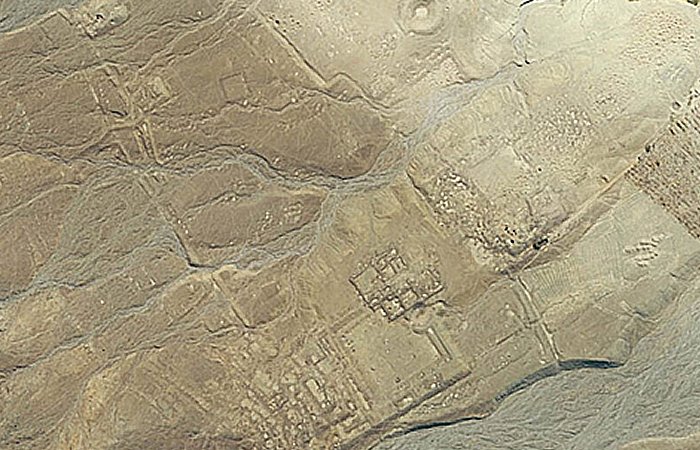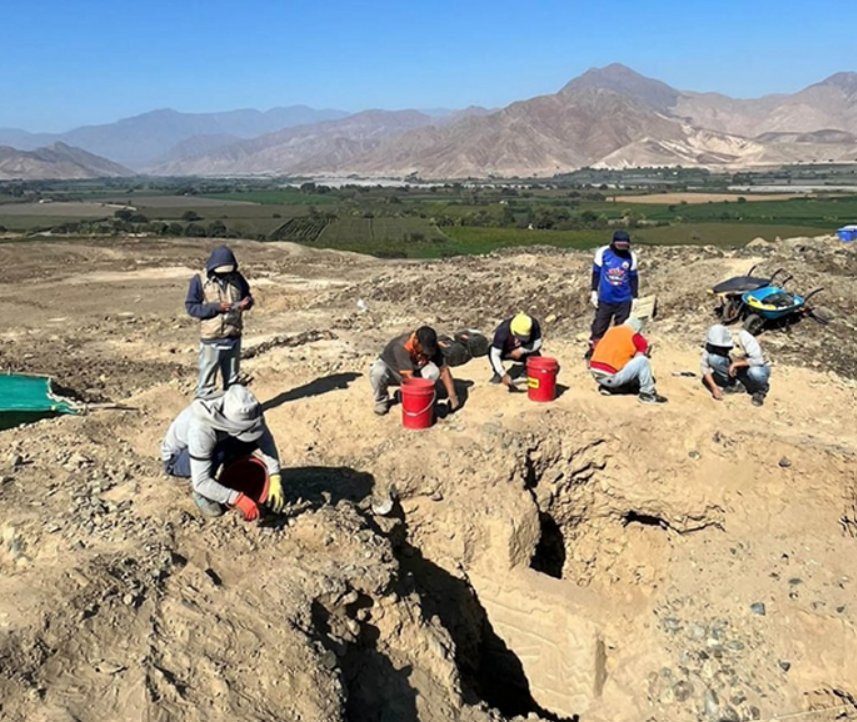Conny Waters – AncientPages.com – At the archaeological site of Huaca Yolanda, situated 500 miles north of Lima, the capital of Peru, researchers have unearthed a three-dimensional multicolored mural believed to be between 3,000 and 4,000 years old.

The polychrome mural found at Huaca Yolanda. Photo courtesy PUCP.
This extraordinary finding, created by a relatively obscure culture, significantly enriches our understanding of the pre-Inca cultures of the country’s northern coast, as well as their artistic techniques and cultural expressions.
“This mural at Huaca Yolanda is unique: nothing like it has ever been recorded in the area, neither in the Santa Valley nor in the Chao Valley,” commented Dr. Ana Cecilia Mauricio, an archaeologist and professor at the Pontifical Catholic University of Peru (PUCP), who led the research.

An aerial view of the site at Huaca Yolanda. Image credit: PUCP
The combination of decorative elements such as stars and figures of fish-like beings, with fishing nets, makes this mural a piece of unexpected sophistication for its time.
“Although we have only just begun excavating, the estimate, based on the style of design and decoration of this mural, is between 3,000 and 4,000 years old,” commented Dr. Mauricio.
The discovery belongs to a temple from the Formative Period, a crucial time marked by the emergence of the first complex societies on the northern coast of Peru. Based on the archaeologists’ current data, the mural is approximately 5 meters in length and 2 meters in height. The team unearthed it during the examination of the temple’s outer wall.

An aerial view of the site at Huaca Yolanda. Image credit: PUCP
“This mural at Huaca Yolanda is unique: nothing like it has ever been recorded in the area, neither in the Santa Valley nor in the Chao Valley,” she commented.
It displays decorative elements such as stars and figures of fish-like beings, accompanied by fishing nets. The figures in the mural reveal a deep symbolism of the ancient pre-Inca cultures.
The ancient craftsmen who created the mural possessed advanced painting techniques.
This mural was discovered during planned excavations as part of the Early Ecodynamics Archaeological Program, which Dr. Mauricio has led since 2012.

Excavationsat the site at Huaca Yolanda. Image credit: PUCP
“We didn’t expect to find something of this magnitude. This mural is a surprise, something we hadn’t anticipated,” she commented. Although the team had planned to excavate in the area affected by the looting, the mural appeared unexpectedly, highlighting the large holes opened by looters.
The excavation not only has academic value but also seeks to raise awareness among local communities, especially the residents of the Tanguche Village Center, about the importance of this heritage.
Source
Written by Conny Waters – AncientPages.com Staff Writer


